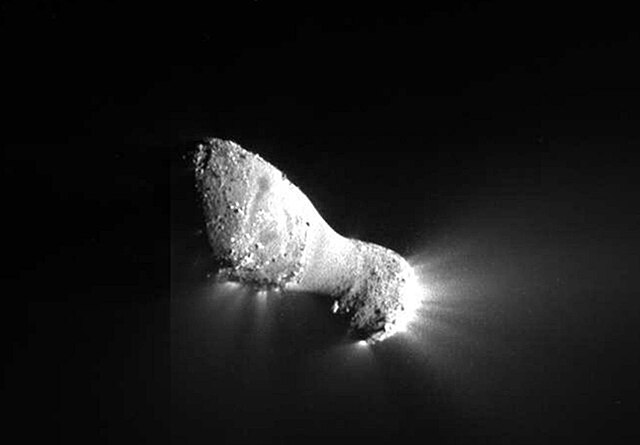69230 Hermes is a sub-kilometer sized asteroid and binary system on an eccentric orbit, classified as a potentially hazardous asteroid and near-Earth object of the Apollo group, that passed Earth at approximately twice the distance of the Moon on 30 October 1937. The asteroid was named after Hermes from Greek mythology. It is noted for having been the last remaining named lost asteroid, rediscovered in 2003. The S-type asteroid has a rotation period of 13.9 hours. Its synchronous companion was discovered in 2003. The primary and secondary are similar in size; they measure approximately 810 meters (2,700 ft) and 540 meters (1,800 ft) in diameter, respectively.
Recovery of Hermes on 15 October 2003
Arecibo radar image from 19 October 2003, showing the relative motion of the components.
A near-Earth object (NEO) is any small Solar System body orbiting the Sun whose closest approach to the Sun (perihelion) is less than 1.3 times the Earth–Sun distance. This definition applies to the object's orbit around the Sun, rather than its current position, thus an object with such an orbit is considered an NEO even at times when it is far from making a close approach of Earth. If an NEO's orbit crosses the Earth's orbit, and the object is larger than 140 meters (460 ft) across, it is considered a potentially hazardous object (PHO). Most known PHOs and NEOs are asteroids, but about 0.35% are comets.
Image: Asteroid 2006DP14
Image: The VLT images the very faint Near Earth Object 2009 FD
Image: Comet Hartley 2
Radar image of (388188) 2006 DP14 recorded by a DSN antenna





